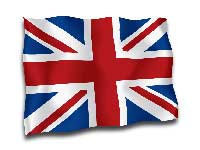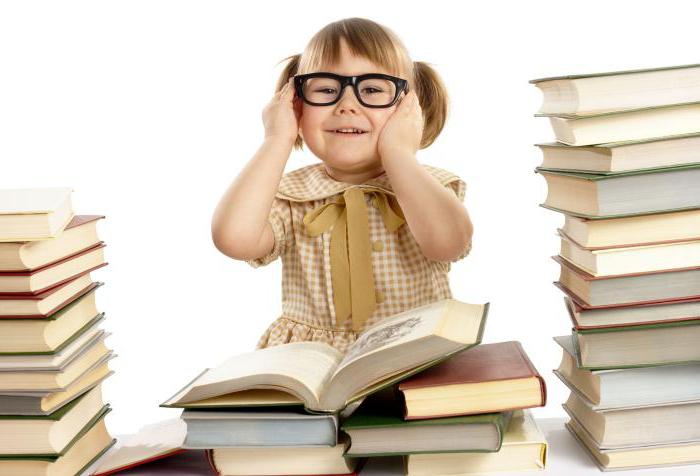 The English alphabet is the foundation of language learning, which must be mastered in order to be able to move forward. Having familiarized yourself with what letters are in the alphabet, you need to move on to the next stage of training - the study of vowels. It is known that in English there are only six vowel sounds, which, when combined with consonants, allow you to form words.
The English alphabet is the foundation of language learning, which must be mastered in order to be able to move forward. Having familiarized yourself with what letters are in the alphabet, you need to move on to the next stage of training - the study of vowels. It is known that in English there are only six vowel sounds, which, when combined with consonants, allow you to form words.
Video training “English from scratch. Lesson 2. Vowels "
Vowel letters of the English alphabet
As mentioned above, in English alphabet only 6 vowels, including:
These six vowel letters represent 20 different vowel sounds.
Vowel reading rules
The reading of the letter coincides with the sound when the letter is in an open syllable. For example:
- a - name, man, small, America;
- e - me (in a closed syllable we get the sound [e] - end, at the end of polysyllabic words the ending is zero);
- i - time;
- o in a closed syllable reads as "o", and in an open syllable as [oy] - no;
- u in an open syllable reads like this - student, and in a closed syllable it reads like a Russian "a" - bus;
- y - in an open syllable reads as [ay] (fly), at the end of words as [and] (city), and at the beginning of words [y] (yes).
Long vowels
It is customary to add two dots to long vowels in transcription. Examples of long vowels:
- meet - [and:];
- car -;
- sports -.
The letter r after vowels can affect the length of the sound.
English diphthongs
A diphthong is a combination of two sounds that occur in one word. According to the rules of English language diphthongs are indivisible sounds.
In English, there are also triphthongs, which contain three vowels, but this is a more difficult level. To begin with, it is advisable to learn the rules for reading vowels in closed and open syllables, and put them into practice.
Today, the role of studying foreign languages, including English. His knowledge is required not only in travel, conversations with foreigners, but also in Everyday life Russian hinterland. This is often a prerequisite when working with a computer, and for many, proficiency in English is quite a weighty item on their resume. That is why today they begin to study it at any age and with great interest. However, before diving into the complex system of tenses, articles, and various grammatical schemes, it is worth learning the English alphabet.
What is the alphabet?
Some linguists argue that the alphabet is an integral system, a reflection of the picture of the world and the way of thinking of a particular people. The native speakers themselves consider the alphabet to be the basis of the entire language. The British, for example, say: "It's as easy as ABC" ("It's just like an alphabet"), which means that they perceive their system of written signs as simple and accessible to everyone. The alphabet is a form of writing in which individual characters - letters - correspond to certain sounds, and in some languages - to syllables.
The letters of the English alphabet are borrowed from the Latin language. There are 26 of them. However, the number of letters in the English alphabet was not always the same. At the beginning of the 11th century, an alphabet is mentioned, which consisted of 23 Latin letters, supplemented by four letters based on the Anglo-Saxon runes. In the course of the development of the language, the writing system changed, and with it the composition of the alphabet. Today it consists of 6 vowels and 20 consonants.
The letters A, E, I, O, U, Y are used to convey vowels in writing, and therefore the vowel letters of the English alphabet are called. In written speech, they can be used both independently and as part of digraphs - combinations of letters that convey one sound.
The consonants of the English alphabet B, C, D, F, G, H, J, K, L, M, N, P, Q, R, S, T, V, W, X, Z are designed to convey consonant sounds and , as well as vowels, can be part of digraphs.
The order of letters in the alphabet
The strict order of the letters is of great importance in the study of the alphabet. The principle of compiling dictionaries and reference books is built on an alphabetical basis. To order english letters easier to remember, a song was invented in which instead of words the names of letters are given.
In addition, the table will help you remember the English alphabet:
| Letter | Name | Pronunciation | Transcription | Russian notation of the name of the letter |
| a | a | 🔊 Play a | Hey | |
| b | bee | 🔊 Listen b | bi | |
| c | cee | 🔊 Listen c | si | |
| d | dee | 🔊 Listen d | di | |
| e | e | 🔊 Listen e | and | |
| f | ef | 🔊 Listen f | eff | |
| g | gee | 🔊 Play g | ji | |
| h | aitch | 🔊 Listen h | heych | |
| i | i | 🔊 Listen i | ah | |
| j | jay | 🔊 Listen j | jay | |
| k | kay | 🔊 Listen k | kay | |
| l | el | 🔊 Listen l | ||
| m | em | 🔊 Listen m | Em | |
| n | enn | 🔊 Listen n | en | |
| o | o | 🔊 Listen o | OU | |
| p | pee | 🔊 Play p | pi | |
| q | cue | 🔊 Listen q | q | |
| r | ar | 🔊 Listen r | a, ar | |
| s | ess | 🔊 Play s | es | |
| t | tee | 🔊 Listen t | ti | |
| u | u | 🔊 Listen u | NS | |
| v | vee | 🔊 Listen v | in and | |
| w | double-u | 🔊 Play w | [`dʌbl` ju:] | double |
| x | ex | 🔊 Listen x | the ex | |
| y | wy | 🔊 Listen y | wye | |
| z | zed, zee | 🔊 Listen z | , | zed, ze |
The correct pronunciation of the names of the letters of the English alphabet can be heard in the video below. It is important to note that the pronunciation of letters and their names are significantly different, therefore, in order not to be mistaken in reading a particular letter in the text, you can use transcription.
In everyday life, the names of letters are practically not used. Exceptions are abbreviations and some simple words, for example:
- the word OK ("okay, okay") is usually spelled - okay;
- MC (short for master of ceremonies - entertainer) is pronounced as emcee;
- DJ (short for disc jockey) is pronounced deejay.
Due to the similarity in the pronunciation of some letters (such as p and b, m and n), confusion often arises, especially when it comes to a telephone conversation or radio communication. Therefore, the police, pilots and employees of some other services use pronounceable alphabet(spelling alphabet). In it, each letter corresponds to a specific word, which allows you to distinguish the spoken letters by ear. For example, m is named Mike and n is November.
Numerical value of letters
In some ancient languages, in addition to the sound content, the letters were also assigned a numerical value. There are several systems for alphabetic notation of numbers based on different languages. Echoes of this principle are today preserved in the school grading system in the United States, where the marks are the letters of the English alphabet. Instead of the usual "fives", American students get "A", instead of "fours" - "B" and so on in descending order.
Outside the alphabet
Often in writing, English-speaking peoples use additional characters that are not included in the alphabet, but are nevertheless readable. These signs include:
— diacritical marks(mainly in borrowed words, which lose them over time and adapt to the main set of letters in the alphabet);
— ampersand- better known as the & - is used to denote the union and (and);
— apostrophe- denoted as a comma above a letter and is used to shorten words. For example: it’s instead of it is. Some groups of words (it’s and its, we’re and were, sister’s and sisters) in the letter can only be distinguished.
There are fifteen vowel sounds in English, which are conveyed by the letters a, e, i, o, u. The letters y, w and gh are also used for vowel sounds. They are divided into short vowels and long vowels. However, their names do not mean that the short ones are pronounced short, and the long ones are drawn out. The differences between them lie in articulation, and not in the duration of the pronunciation. The names "short" and "long" are only needed for English learners who still have a hard time distinguishing the differences by ear.
There are also sounds that are not short or long. They are conveyed by a combination of different letters, including consonants. For example, the consonant letter w in some situations can denote a vowel sound.
Short vowels
The term "short vowel sound" is used to denote the sounds conveyed by the letters a, e, i, o, u, which stand between two consonants or at the beginning of a word:
A - / æ / (for example, in the words apple, pan, mat)
E - / ɛ / (for example, in the words elephant, pen, met)
I - / ɪ / (e.g. insect, pin, mitt)
O - / ɒ / (for example, in octopus, ostrich, upon, motto)
U - / ʌ / (for example, in the words umbrella, pun, mutt)

Long vowels
Long sounds are not a drawn-out version of short ones. Long vowel sound is the term used to refer to vowel sounds whose pronunciation is the same as how a letter is read in the alphabet. Five vowel English letters (a, e, i, o, u) have corresponding long vowel sounds / eɪ /, / i /, / ɑɪ /, / oʊ /, / yu /.
A - / eɪ / (for example, in the words ate, mate)
E - / iː / (for example, in the words eat, meat)
I - / aɪ / (for example, in the words mite, might)
O - / oʊ / (for example, in the words oats, mote, moat)
U - / juː / (for example, in mute)
The rule of the dumb letter "e". When in a word after a vowel and a consonant there is the letter e, it is in almost all cases dumb, that is, it is not readable. In addition, it makes the vowel in the previous syllable long, even if it stands between two consonants. For example, as in the words ate, plane, bite, nine, rope, note, cube, flute.
Comparison table for short and long vowels

Other vowels
The remaining five sounds - / ʊ /, / u /, / ɔ /, / ɔɪ /, / aʊ / - can not be attributed to either short or long. Most of them are conveyed using a few letters.
U - / ʊ / (for example, in the word put)
Oo - / u / (for example, in the word soon)
Aw - / ɔ / - (for example, in dog)
Oi - / ɔɪ / - (for example, in join)
Ow - / aʊ / - (for example, in the word down)
The days when runic signs were used in the English language, like "thron" - "thorn", "wynn" - "wynn", "eth" - "et", "ethel" - "etel" or " eng "-" eng ". Then the question arises - how many letters were in the English alphabet in ancient times, if besides those that we know today, there were others? Old English had 23 letters of the alphabet. Over time, the English language, like any other, has undergone significant changes, and the modern generation will certainly not understand the meaning of the word "feohtan" (fight). Letters that look quite modern could previously have a completely different sound and be transmitted, for example, with only one sound (in contrast to the vowels that we have today).
How many letters are there in the English alphabet today?
The modern English alphabet is based on the Latin alphabet (26 letters in total). Each of the 26 letters can be transmitted with one or more sounds. The name of a letter can also serve as one of its sounds. For example, the letter A can sound like a long a, ah, or ae. She can take different positions in the word. For example, A in different positions: ape (monkey), cat (cat), zebra (zebra).
A letter can be used more than once in the same word. If this happens, then the sounds in this word can be either the same or different from each other. Words that contain repeating letters: clock (wall or table clock), kettle (kettle), airplane (plane), apartment (room).
How many letters are there in the English alphabet: how many vowels, how many consonants?
There are two types of letters: consonants and vowels. Their main difference is in articulation. When pronouncing consonants, airflow is interrupted or restricted by the position of the tongue, teeth or lips. Most of them are conveyed with only one sound and rarely sound like the name of the letter itself. Based on the knowledge of how many letters are in the English alphabet, it can be concluded that most of the letters are consonants (21 letters).

Consonant letters with examples
B: boy, bear, ball, blow, boat, boot, back, bed, bird, bread ), begin, breakfast, bright.
С: car, candle, centipede, cause, cloth, container, cow, crowd, city, command ).
D: dance, date, describe, destroy, dictionary, difficult, direction, district, dream.
F: face, fact, event, finger, fail, farm, fear, field, fight, fire (Fire).
G: game, garden, gather, glass, goods, government, grass, greet, ground , guest
H: hair, handle, half, happen, hard, hate, health, heavy, holiday, hunger ).
J: job, join, joke, journey, jump, just.
K: keep, key, kill, kind, kiss, kitchen, knife, knock, know, knowledge (knowledge).
L: labor (work), lamp (lamp), language (language), last (last), laugh (laugh), lazy (lazy), learn (learn), dufmu (leave), lesson (lesson), lie (lie ), luck (luck).
M: make (do), manage (be able, succeed), map (map), mark (mark), marry (marry / get married), master (master some skills, knowledge), mood (mood).
N: narrow, native, neighbor, news, next, night, noon, nose, note, notice ), now.
P: page, parent, pass, patient, perfect, pick, pillow, press.
Q: quantity, quality, quarrel, quarter, question, quiet, quick, quite;
R: rain, raw, reach, receive, refuse, repair, reply, rest, roof ).
S: safe, sand, seem, sense, servant, serve, several, sheet, shut, skin ), spoon (spoon), supper (dinner).
T: talk (to speak), term (term); thank, title, tonight, train, translate, trip, trouble, turn.
V: vacation, value, various, vegetable, victory, visit, voice.
W: wait, walk, wall, warm, weak, weigh, wet, whistle, wool, worth
X: xylophone (xylophone), x-ray (X-rays).
Y: yellow, year, yesterday, yet, young.
Z: zero (zero), zoo (zoo).

Vowels with examples
When vowels sound, air flows freely through the mouth. How many vowels are there in the English alphabet? Five of the 26 letters of the alphabet are vowels: A, E, I, O, and U. Y is sometimes considered the sixth on this list because it can sometimes sound like vowels.
Unlike consonants, each of the vowel letters is transmitted by more than one sound, or, on the contrary, may not transmit any sound at all. Let's take a closer look at how many letters are in the English alphabet (vowels, in our case), and study them with examples.
A: able, abroad, action, advice, afterwards, agree, aim, allow.
E: earth, ear, easy, enemy, enter, event, except, exist, explain, eye ( eye), examine.
I: ice, idea, ill, important, indeed, interest, interval, introduce, invite, island ).
O: occupy, old, open, opposite, oral, order, own.
U: uncle, unemployed, unless, useful, usual.
By adding consonants and vowels, you can count how many letters in the English alphabet are 26.

When the pronunciation of vowel sounds coincides with the name of the letters, then we are talking about long sounds. Vowels can also be short. Whether a vowel is transmitted by a long sound, short or none at all, depends on the position of the letter in the word and its proximity to other letters.
26 or 44?
Those who are just starting to learn a language, when reading, are often confused between the names of letters and the sounds that these letters are transmitted by. It is worth distinguishing how many letters are in the English alphabet and how many sounds - 26 letters and 44 English sounds (19 vowels and 25 consonants).


